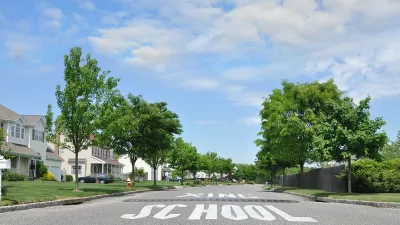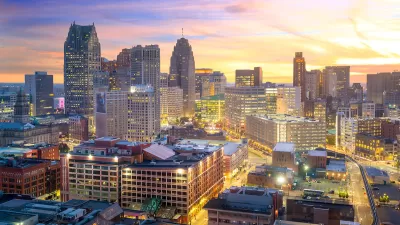It's almost like the Great Recession and the Great Urban Renaissance never happened, as Americans are moving to the suburbs and the Sunbelt than to the nation's urban areas.
Jed Kolko breaks the news of the latest population figures for 2015, as released this week by the U.S. Census Bureau. The big winners, according to Kolko's analysis: the suburbs and the Sunbelt.
Here's how Kolko summarizes the latest population data:
After volatile swings in growth patterns during last decade’s housing bubble and bust, long-term trends are reasserting themselves. Population is growing faster in the South and West than in the Northeast and Midwest, and faster in suburban areas than in urban counties; both of these trends accelerated in 2015.
Kolko provides lists of the fastest growing metro areas, the fastest growing large metro areas, and a few other lists, including lists of metro areas with the steepest population declines. Kolko also shares three trends as takeaways from the data, with more detail provided in the article:
- An accelerating shift of population toward the Sunbelt.
- A recent slowdown in population in urban counties.
- Metropolitan areas with at least one million people grew faster than midsize and smaller metros.
An article by Laura Kusisto for the Wall Street Journal, which follows on Kolko's reporting, argues that the U.S. Census data supports the thesis that the housing boom and bust of the last decade "merely created a temporary disruption" in the way Americans live.
FULL STORY: 2015 Population Winners: The Suburbs and the Sunbelt

Montreal Mall to Become 6,000 Housing Units
Place Versailles will be transformed into a mixed-use complex over the next 25 years.

Planetizen Federal Action Tracker
A weekly monitor of how Trump’s orders and actions are impacting planners and planning in America.

DARTSpace Platform Streamlines Dallas TOD Application Process
The Dallas transit agency hopes a shorter permitting timeline will boost transit-oriented development around rail stations.

Interactive Map Reveals America's “Shade Deserts”
Launched by UCLA and American Forests to combat heat-related deaths, the tool maps the shade infrastructure for over 360 U.S. cities.

Bicycles and Books — In Sacramento, Libraries Now Offer Both
Adult library card holders can check out e-bikes and e-trikes for up to one week.

Colorado Landfills Emit as Much Pollution as 1M Cars
Landfills are the third-largest source of methane pollution in Colorado, after agriculture and fossil fuel extraction.
Urban Design for Planners 1: Software Tools
This six-course series explores essential urban design concepts using open source software and equips planners with the tools they need to participate fully in the urban design process.
Planning for Universal Design
Learn the tools for implementing Universal Design in planning regulations.
City of Mt Shasta
City of Camden Redevelopment Agency
City of Astoria
Transportation Research & Education Center (TREC) at Portland State University
US High Speed Rail Association
City of Camden Redevelopment Agency
Municipality of Princeton (NJ)




























